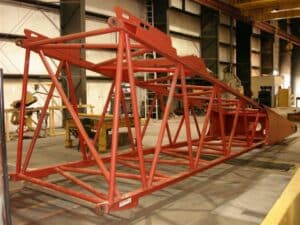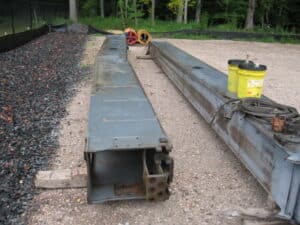This article is by Tim Hillegonds, a former insurance expert at NBIS
After spending a decade in the insurance industry listening to policyholders share their opinions regarding everything from coverage to deductibles to claims adjusters, I’ve come to one very important conclusion: Most people don’t like insurance. I know it’s hard to believe, but I can assure you it’s true. Virtually everyone thinks that premiums are too high and that options are too few. And almost everyone has a nightmare go-to claim scenario they bring up every time they’ve got an audience that will listen.
While I do write this with a bit of lighthearted cynicism, it’s hard to argue against the opinions of the majority. And it’s not necessarily limited to crane insurance policies that people are complaining about either. Throw in medical, homeowners, or automobile insurance, and you’re likely to hear a curse word or two interspersed in their diatribe.
Yes, somewhere along the way, the system broke down.

Early in my career, while having a conversation with an executive of the company I was working for, I referred to insurance as a “necessary evil.” He gave me a confused stare and proceeded to tell me that insurance wasn’t evil at all. I was skeptical, but he continued by explaining that insurance provided a valuable service to consumers that they couldn’t live without. He explained that society would have a hard time functioning if every person out there had to keep the cash on hand to buy a new car every time they got into an accident, or if they had to do the same for a house, a diamond ring, or a boat. Sure, insurance companies make a lot of money, but they also pay out a lot of money. Although it pains me to say this, we need insurance to function.
Like economies and computers, insurance is a system. And for that system to work properly, all of its individual components need to be doing their part. Once one particular piece stops performing adequately, other parts of the system either have to work harder to compensate, or break down completely.
To put this in perspective, and perhaps give it some meaning relative to the heavy construction industry, I’ll tell you a story.
About twenty years ago, underwriters in the insurance industry were still trying to wrap their minds (and pencils) around the idea of insuring crane and rigging companies. They didn’t quite understand the risk yet, and the equipment was bigger, scarier, and more expensive than most of what they had been insuring. But they saw it as a lucrative industry and were willing to give it a shot. After all, high risk typically means high reward.
As insurance companies started to insure crane and rigging outfits, claims began to occur. Equipment was damaged. Cranes were side loaded and tipped. Booms bent and adjusters needed to be sent to accident sites or equipment yards to appraise the damage. Insurance companies would send out their best equipment guy who would do his best to survey and appraise the damage. On the surface, everything seemed good. However, there was one major problem: He didn’t actually know how to appraise cranes.
There was one crane company in particular that figured this out early on. When the adjuster would come to appraise the damage, they would give him the run around—pushing their opinions on him and telling him the crane couldn’t be fixed and needed to be totaled. The adjuster wouldn’t know any better. He’d eventually agree. And in turn the crane company would get a sizable check for a totaled crane. In most cases, the insurance company would even let the policyholder keep the damaged crane, since they really didn’t know what to do with it anyway. And maybe all this would have been okay, but unfortunately, it didn’t stop there.
After receiving the check for the totaled crane, this particular company would repair the equipment and sell it for a profit. Some people would call this “being opportunistic.” Others would just call it insurance fraud. Regardless of what you call it, though, it’s an example of a breakdown in the system.

You see, after something like this happens a few times, the insurance company underwriters get together and look at the loss ratio on their crane program. They see that it’s completely out of whack, and they initiate a mandatory rate increase across the board. After all, insurance companies aren’t in business to lose money year after year. The companies that have been operating within the boundaries are affected by those that operate outside of them. The crane company selling repaired cranes at a profit can afford the hike in rates, but everyone else is stuck footing a higher renewal premium the following year. And all this because one particular component of the entire system isn’t operating like it’s supposed to.
How crane recovery can reduce your crane insurance premiums
So what’s the point I am trying to make? It’s this: For the system to be beneficial to everyone, we’ve got to initiate crane repair options when we can. I’m not saying that there aren’t times to total a piece of equipment—we all know there are—I’m only saying that the less money an insurance company pays out on a regular basis, the less likely mandatory rate increases are going to be the reason you’re paying more money come renewal time. Sure, everyone likes bright, shiny, new equipment, but everyone also likes paying what he or she deserves to pay, not what someone else is dictating they pay. I mean, think about it. If everyone got a new car each and every time they got into a fender bender, how much do you think car insurance would cost? It’s the same principle.
Read about how to change the crane insurance paradigm
Do what you can to ensure the system doesn’t break down. Repair your equipment when you can. Replace it when it’s needed. Be the piece in the overall system that continues to do its part even when it’s inconvenient. Your insurance company (and your mother) will thank you.



